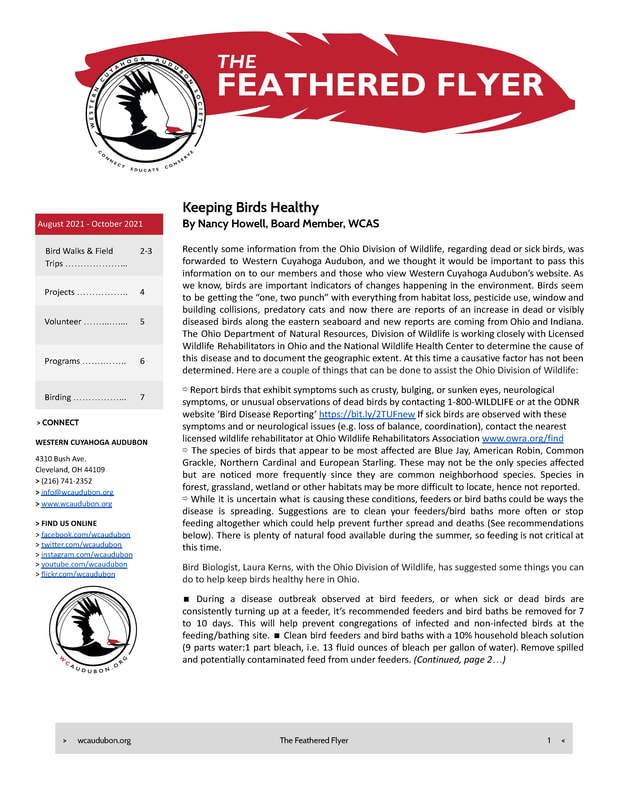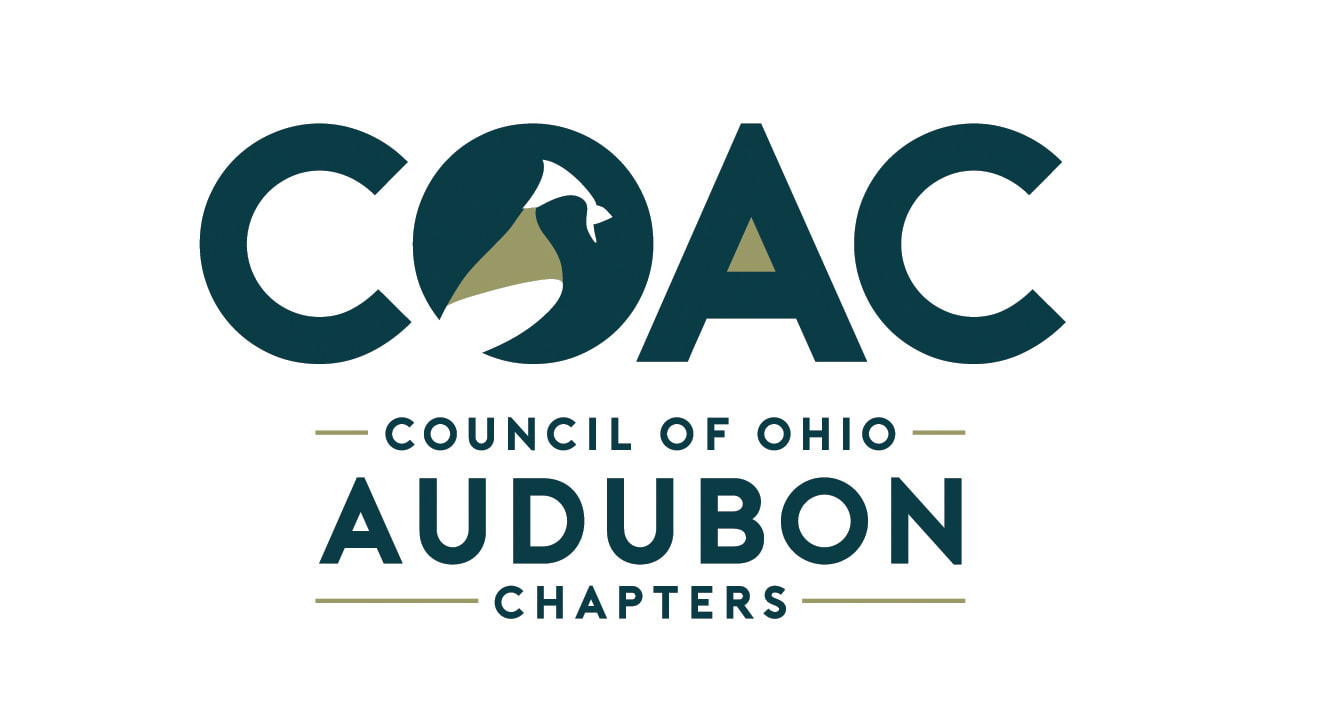Black River Audubon and Lorain County Community College (LCCC) to Celebrate Partnership Agreement3/28/2018 The partnership between Black River Audubon and Lorain County Community College (LCCC) recognizes the 21-acre preserve as an important resource for the college ecological curriculum and serves as an example to the community of the need for conservation of meadow environments.
Black River Audubon and Lorain County Community College (LCCC) to Celebrate Partnership Agreement
By Harriet Alger, Black River Audubon Society Member On April 20th Black River Audubon and Lorain County Community College representatives will meet in the campus Meadow Preserve to celebrate a new partnership agreement, one that recognizes the 21-acre preserve as an important resource for the college ecological curriculum and serves as an example to the community of the need for conservation of meadow environments. In 1999, Jack Smith, President and founding member of the Black River Audubon Society, and Joe Strong, board treasurer, observed that bobolinks, which were on Ohio’s Audubon Watchlist, appeared every spring in the northeast corner of Lorain County Community College’s campus. They realized that if the area was not mowed until September, ground nesting species like bobolinks, meadowlarks, and Savannah sparrows would be likely to mate and breed in the meadow. They also saw that Lorain County Community College was blessed with a small wooded trail adjacent to the meadow with about 80 species of trees, plants, bushes and early spring wildflowers. Jack and Joe met with Lorain County Community College President Dr. Roy Church to suggest preserving and developing these areas to stimulate more public interest in conservation and to serve as resources for college courses. The meeting resulted in an agreement that the meadow would not be mowed during nesting season from April to September except for a trail for marathon runners. President Church also agreed that these areas would be known as the Black River Audubon Society/Lorain County Community College Meadow Preserve and Flora Interpretive Trail, with college permission required for any additions or changes. The Stocker Foundation provided matching funds for a display case in the meadow and a fence and guide boxes for the trail. Healthy colonies of bobolinks and meadowlarks and small families of Savannah sparrows began to nest in the grassland meadow in increasing numbers each year. Endangered butterflies and bees also flourished, attracting neighborhood walkers from the retirement center on the northern boundary. Boxes were provided for cavity nesters allowing them to benefit from insects, seeds and other food in the meadow and providing plenty of space in which to fly. Tree swallows and bluebirds occupied those boxes. Recently, a large kestrel box has become the successful nesting site of another beautiful species in decline. Many other bird species nest and/or feed in the meadow and in the trees along the eastern boundary. Migrant birds also find respite and food before continuing their journey. Students from Ruby Beil’s ecology classes aided Jack, Joe, Dick Lee, Wayne Shipman, and botanist Dorothy Hagerling in maintaining the trail, display case, and nesting boxes as the preserves developed. Recently, Penny and Fritz Brandau, Larry Wilson, and volunteers from the bluebird and kestrel conservation programs have assumed responsibility for the nesting boxes. Andy Lance has recruited ecology students to help with the meadow and trail. Unfortunately, an invasive species of shrubs began appearing a few years ago in areas that could not be mowed in the fall because of extremely wet weather. They gradually spread into nesting areas of meadowlarks and bobolinks and then throughout more and more of the meadow. Tim Gadomski of the college plant grounds staff identified them as gray dogwood, native but a serious problem, almost impossible to control or to eradicate when they begin spreading into areas where they are not wanted. Meadow nesting birds need grasses. Other birds and wildlife need a healthy source of food from a diversity of plants in a meadow. Representing the Black River Audubon Board, I met with college representatives to address the problem. Kate Pilacky, of the Oberlin Office of the Western Reserve Land Conservancy, helped with research and advice. Keith Moran, of the Cleveland Museum of Natural History identified contractors capable of permanent eradication treatment, not harmful to wildlife, and the reseeding of affected areas. A contractor was chosen; invaded areas have been treated, reseeded, and are beginning to recover. Kate and Andy have also been providing seeds and plants in recovery areas. As a result, meadowlarks returned to nest last year. Savannah sparrows were seen again. We hope that bobolinks will return this year, along with more signs of a renewed and thriving meadow. Before his retirement, President Church approved a new partnership contract between Lorain County Community College and Black River Audubon to provide better collaboration and communication in the future. On April 20th we will gather at the new display sign as you enter the meadow to celebrate the new partnership agreement and the work that has been done. All are welcome to join us! Details on Black River Audubon and Lorain County Community College (LCCC) Meadows Presentation April 20
The ceremony to celebrate the new partnership between Black River Audubon and Lorain County Community College has been included in the college’s Earth Day program. All activities of the day including lunch are free and open to the public. The Black River Audubon and Lorain County Community College (LCCC) presentation will be at 12:45 pm.
Friday, April 20th: 8:00 am to 8:50 am – Gardening session with Early College High School 9:00 am – 9:10 am– Welcome and opening remarks – Ruby 9:10 am – 9:20 am – Introduction to Citizen’s Climate Lobby and the film “An Inconvenient Sequel” 9:20 am – 11:00 am – Film screening 11:00 am – 11:45 am – Composting workshop with Ann Chanon of OUS Extension Noon – 12:30 pm – Free lunch 12:30 pm – 12:45 pm – walk to the Meadow Preserve 12:45 pm– 1:15 pm– Sign Ceremony in the Meadow Preserve with Harriet Alger of the Black River Audubon Society 1:15 pm– 2:30 pm – Outdoor activity – hike around the Meadow or Gardening with Danielle Black River Audubon and LCCC Presentation details
Article reprinted from April 2018 Wingtips Newsletter published by the Black River Audubon Society
(For more information, visit www.blackriveraudubon.org or call 440-365-6465)
Make A Donation to Western Cuyahoga Audubon. Your gifts guarantee chapter activities, programs and research continues to reach members and connect birding conservationists around the world. Use our safe and secure PayPal payment button below to make a donation of any amount you choose. All donations are gratefully received.
Comments
|
Story BlogThe Feathered Flyer blog publishes human interest stories about birding and habitat conservation. After watching, ‘My Painted Trillium Quest' by Tom Fishburn, Kim Langley, WCAS Member said, “Wonderful! It was a lift just knowing that such a site exists and is being protected!”
Media LibrariesQuarterly NewsletterSTORIESPodcastsWCAS is a proud member of The Council of Ohio Audubon Chapters (COAC) and promotes chapter development by sharing the best practices, brainstorming solutions to common problems, and building relationships in workshops and retreats. Subscribe
VideosYouth
Advocacy
Clean Energy
Reporting
Awards
Volunteerism
Take ActionResourcesBlogsArchives
October 2023
Categories
All
|
EDUCATENews Blog
Monthly Speakers Field Reports Bird Walk Reports Christmas Bird Count-Lakewood Circle Media Library Newsletter Archive Education Resources STORE |
Western Cuyahoga Audubon Society
4310 Bush Avenue Cleveland, Ohio 44109 [email protected] Western Cuyahoga Audubon Society is a 501(c)(3) nonprofit organization. Your donation is tax-deductible. The tax ID number is: 34-1522665. If you prefer to mail your donation, please send your check to: Nancy Howell, Western Cuyahoga Audubon Treasurer, 19340 Fowles Rd, Middleburg Hts, OH 44130. © 2020 Western Cuyahoga Audubon Society. All rights reserved. Privacy Policy | Terms of Use | Legal | Store Shipping Rates | Site Map |










 RSS Feed
RSS Feed

